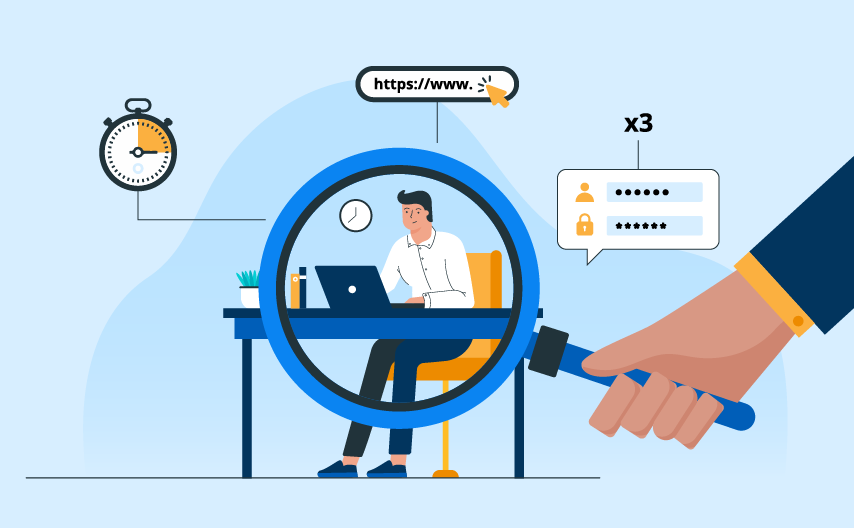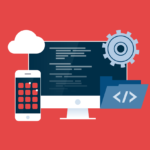In today’s dynamic business environment, the effective management of employees and their productivity is crucial for the success of any organization. Employee Monitoring Software (EMS) has emerged as a powerful tool for businesses, providing insights into employee activities while enhancing security, productivity, and compliance. In this article, we delve into the world of Employee Monitoring Software, exploring its features, benefits, implementation best practices, and future trends.
Introduction
Employee Monitoring Software (EMS) has become indispensable for businesses aiming to optimize operations and ensure regulatory compliance in the digital age. This technology offers a comprehensive solution for tracking and managing employee activities, thereby enabling organizations to streamline workflows and achieve greater efficiency.
Employee Monitoring Software Overview
Employee Monitoring Software refers to a suite of tools designed to track and record employee activities during work hours. These tools play a pivotal role in modern businesses by providing real-time insights into employee performance, behavior, and productivity. By monitoring tasks and interactions, EMS helps businesses identify areas for improvement, strengthen security protocols, and maintain regulatory compliance.
Key Features
The core features of Employee Monitoring Software include:
Time Tracking: EMS enables employers to monitor time spent on various tasks, facilitating accurate payroll management and resource allocation.
Screen Monitoring: This feature allows employers to view employees’ computer screens in real-time, ensuring they stay focused on work-related activities.
Activity Logging: EMS records employee actions, such as websites visited, applications used, and keystrokes typed, providing comprehensive audit trails.
Reporting: Detailed reports generated by EMS offer valuable insights into productivity trends, enabling informed decision-making by management.
These features empower organizations to optimize resource utilization, identify workflow bottlenecks, and foster a culture of accountability.
Benefits of Employee Monitoring Software
The adoption of Employee Monitoring Software yields numerous benefits for employers and employees alike:
Increased Productivity: By identifying inefficiencies and distractions, EMS enables organizations to optimize workflows and enhance employee output.
Cost Reduction: EMS helps reduce operational costs by improving resource allocation and minimizing time wastage.
Remote Work Management: In the era of remote work, EMS ensures that employees remain productive and focused irrespective of their location.
Compliance and Privacy
While Employee Monitoring Software offers compelling benefits, concerns regarding privacy and compliance must be addressed. Businesses need to implement EMS ethically and in compliance with data protection laws. Transparency and clear communication with employees regarding monitoring practices are key to maintaining trust and legality.
Use Cases
Employee Monitoring Software finds application across various industries:
Healthcare: EMS ensures adherence to patient confidentiality and regulatory standards.
Finance: Monitoring tools enhance security and compliance in financial institutions.
Customer Service: EMS optimizes customer support processes by tracking agent performance.
These use cases highlight the versatility of EMS in improving operational efficiency across diverse sectors.
Choosing the Right Software
Selecting the appropriate Employee Monitoring Software requires careful consideration of factors such as scalability, integrations with existing systems, and user-friendliness. Organizations should opt for solutions that align with their unique business needs and growth objectives.
Implementation Best Practices
Successful implementation of Employee Monitoring Software hinges on effective communication and transparency. Organizations must articulate the purpose of EMS to employees, emphasizing its role in optimizing workflows and ensuring regulatory compliance.
Trends and Future Outlook
Looking ahead, the landscape of Employee Monitoring Software is evolving rapidly. Emerging technologies such as AI and machine learning are poised to enhance the capabilities of EMS, enabling organizations to achieve even greater efficiency and transparency in workforce management.
Future Trends in Employee Monitoring Software
As we look toward the future, the landscape of Employee Monitoring Software (EMS) is poised for exciting advancements and innovations. Emerging technologies such as artificial intelligence (AI), machine learning, and advanced analytics are set to revolutionize how organizations track and manage employee activities. Let’s explore some key trends and future outlooks for EMS.
Integration of AI and Machine Learning
One of the most significant trends in EMS is the integration of AI and machine learning capabilities. These technologies enable EMS platforms to analyze vast amounts of data, identify patterns, and generate actionable insights in real-time. For example, AI-powered EMS can automatically detect unusual behavior or deviations from normal work patterns, alerting managers to potential issues such as security breaches or productivity issues.
Predictive Analytics for Performance Optimization
With the help of advanced analytics, future EMS solutions will move beyond retrospective reporting to predictive analytics. By leveraging historical data and machine learning algorithms, EMS platforms can forecast future performance trends, allowing organizations to proactively address productivity challenges and optimize resource allocation.
Enhanced Privacy and Compliance Features
Given the growing concerns around data privacy and compliance, future EMS solutions will prioritize robust privacy features and adherence to regulatory standards. These include enhanced encryption protocols, anonymization of data, and granular controls over access permissions. By prioritizing privacy and compliance, organizations can build trust with employees while ensuring legal adherence.
Focus on Employee Well-being
In addition to productivity and compliance, future EMS platforms will increasingly focus on employee well-being. By monitoring work patterns and stress levels, EMS can help identify signs of burnout or work-related stress, enabling organizations to implement interventions and foster a healthier work environment.
Mobile and Remote Work Monitoring
As remote work becomes more prevalent, EMS solutions will evolve to support mobile devices and remote work environments effectively. Mobile-friendly interfaces and geolocation tracking will enable organizations to monitor and manage distributed teams seamlessly, ensuring productivity and security regardless of location.
Augmented Reality (AR) and Virtual Reality (VR) Integration
Looking further ahead, the integration of AR and VR technologies into EMS platforms presents exciting possibilities. For instance, AR-enabled EMS applications could provide real-time guidance to remote employees, overlaying instructions or data onto their physical workspace. VR simulations could also be used for training purposes, immersing employees in virtual environments to enhance skills development.
Blockchain for Secure Data Management
Blockchain technology holds promise for enhancing the security and integrity of employee monitoring data. By leveraging blockchain’s decentralized and immutable nature, EMS platforms can ensure transparent audit trails and secure data exchange between stakeholders, further bolstering trust and compliance.
Conclusion
In conclusion, Employee Monitoring Software (EMS) is poised to undergo significant transformations in the coming years. From AI-driven analytics to enhanced privacy features and a focus on employee well-being, the future of EMS is characterized by innovation and adaptability. By embracing these trends, organizations can harness the full potential of EMS to optimize productivity, enhance compliance, and create a supportive work environment for their employees.
As businesses navigate an increasingly complex and digital workforce landscape, EMS will continue to play a central role in driving operational excellence and workforce management. By staying abreast of emerging trends and technologies, organizations can leverage Employee Monitoring Software as a strategic asset to achieve their business objectives in the years to come.







